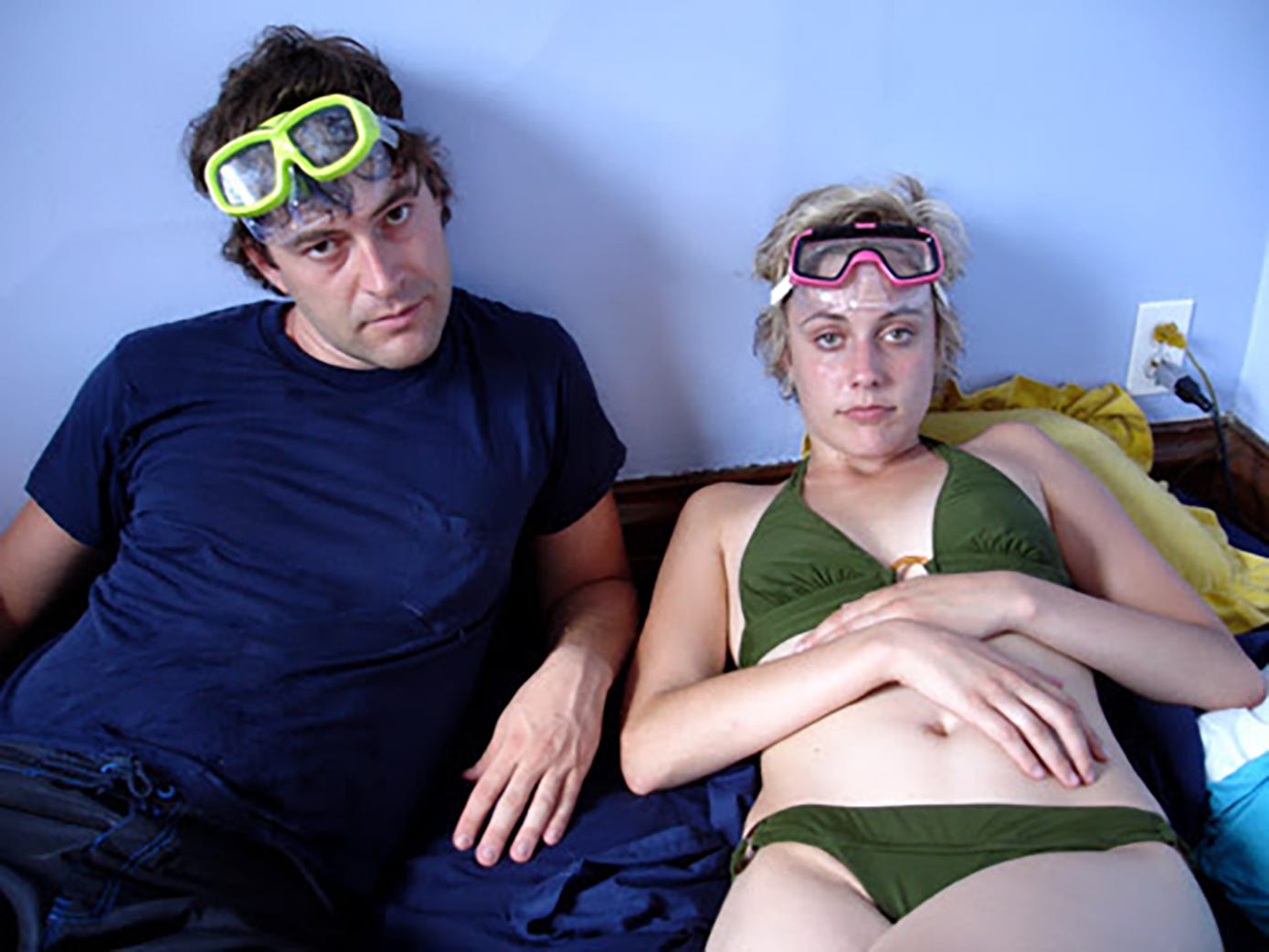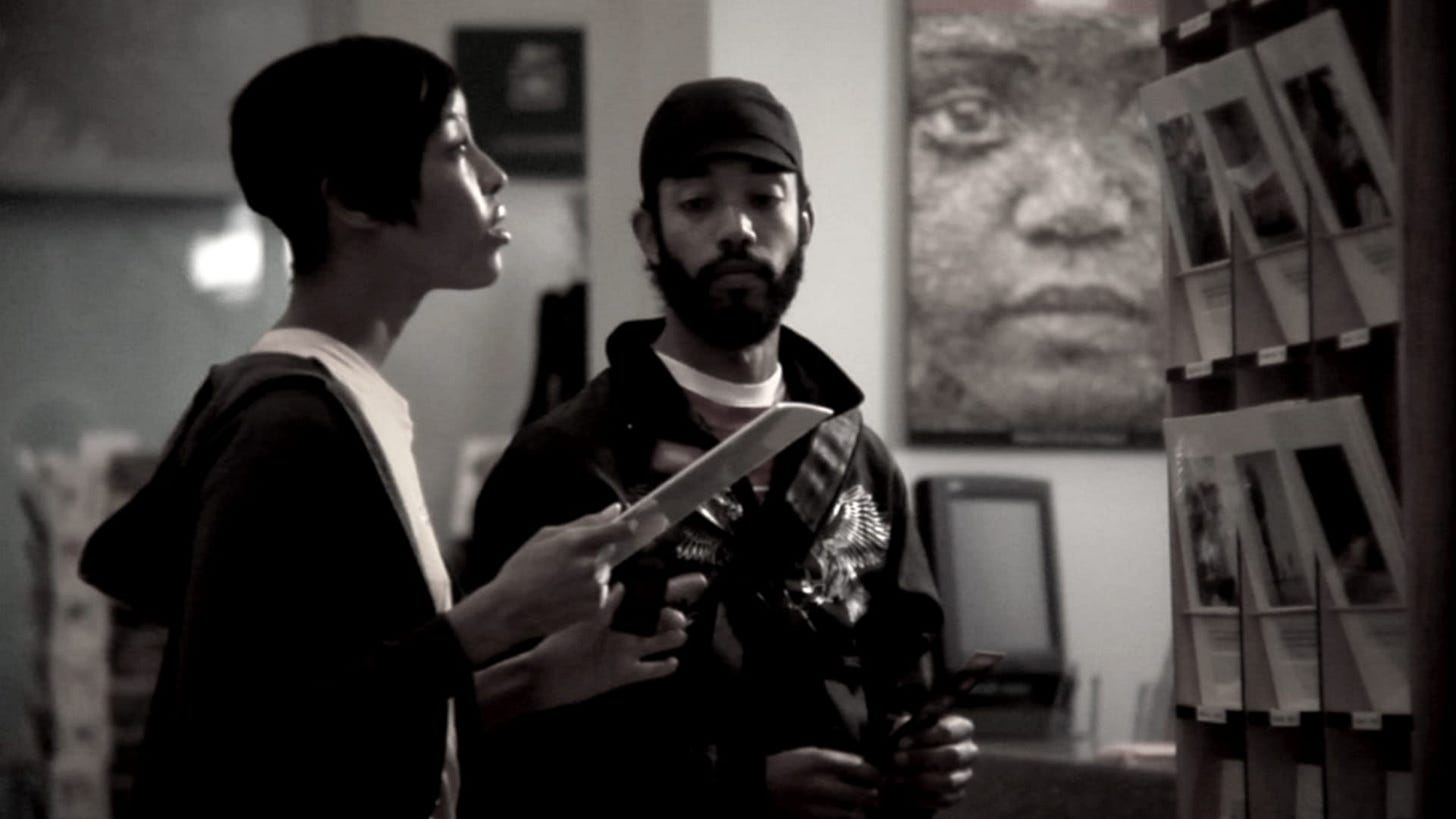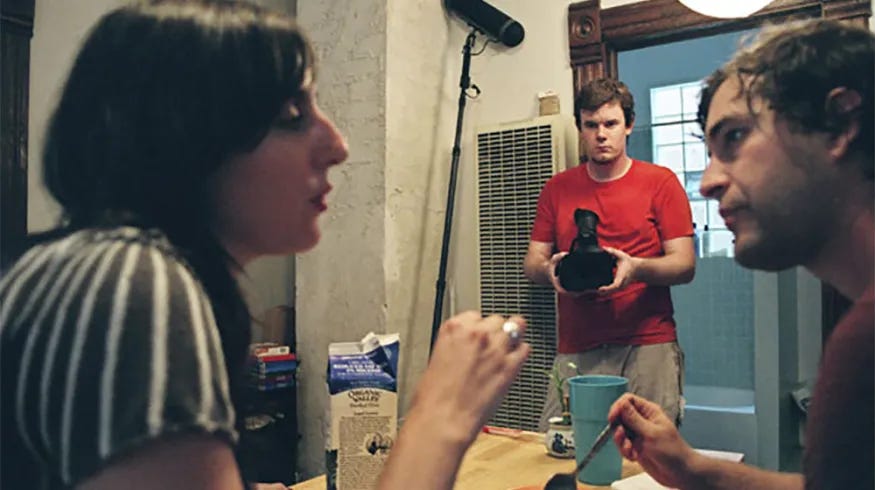Shut up and shoot something
What today's filmmakers can learn from an early 2000s DIY movement (Filmstack Challenge #8)
Every Friday morning for the past 70 weeks or so, I’ve rambled about movies here on Underexposed - specifically, under-the-radar movies that deserve your attention. These ramblings have changed my life in many positive ways.
Well… mostly positive.
See, the smartphone era has been a slow-motion car crash for filmmakers like me. Tech giants have hijacked our attention, dulled our empathy, flattened nuance, disrupted moviegoing etiquette, and now seek to replace filmmakers altogether with slop fabricated from our own stolen work. Meanwhile, unchecked corporate consolidation has turned the film industry into a Monopoly board from hell: financing, distribution, and residual revenue have been slowly choked out.
It is tempting - righteous, even - to illuminate these problems. And believe me, I have. Many, many times. But there comes a moment when “illuminating the problems” - without pursuing solutions - becomes a problem itself.
For the hundred thousand words I’ve poured out in the past year, precious few have gone into new screenplays. At some point, the problems have been illuminated. The lights are on. Time to put aside the impotent doom-goonery, and find our way back to work.
That’s why I’m happy to be a part of Filmstack, a scrappy filmmaking movement blossoming here on Substack. Sparked by veteran producer
- who helped launch the careers of Ang Lee, Todd Field, Nicole Holofcener and Michel Gondry - Filmstack seeks to usher in a new class of non-dependent (Non-Dē) filmmakers.This month, The Treatment’s
- writer of some of the sharpest and most essential film criticism you’ll ever read - tagged me to present this month’s Filmstack community challenge. So here it is:Shut up and shoot something.
Sounds a bit rude, I know. Relax - I didn’t say go make a feature film, or even a short. Filmmaking is expensive, sure - but does it have to be?
Not necessarily…
Case Study: Mumblecore
Following the arrival of digital cameras in the early 2000s, a mutant strain of microbudget indies appeared, known loosely as “mumblecore.” It included works by Greta Gerwig, Andrew Bujalski, the Duplass Brothers, Barry Jenkins, the Safdie Brothers, Anna Kendrick, and Joe Swanberg - a filmmaker who somehow pumped out over 20 features in ten years. Mumblecore filmmakers (though many refused the label and association) used gritty handheld, naturalistic acting, and real settings to explore the emotional and interpersonal struggles of young adults. These movies cost next-to-nothing to make, yet they launched more than a few legit Hollywood careers.
So where the hell is the mumblecore-type movement of today?
That’s what I want to know.
This is the great irony of the smartphone era: While it’s harder than ever to become a filmmaker, it’s also never been easier. The same infernal devices we each scrolled about 81 miles on last year can be flipped over to reveal (gasp) a camera, capable of capturing 4k video. Editing, music composition, special effects, online distribution, promotion, and tutorials for how to learn all of this can also be accessed - on a thing that fits in our pockets. So why are so many of us (me) complaining instead of creating?
One obvious excuse: Tech overlords have siphoned a lot of our creative juice into making “content” and “building a brand” - energy that would have previously gone into making films. This isn’t entirely bad or evil - it has allowed artists to find global audiences. But it can easily become a trap.
In 2025, the future of film is on shaky ground. The October box office plunged to a three-decade low. AMC Theaters just posted a $298.2 million quarterly loss. Tech vultures are circling legacy studios. If we’re going to continue to make bold, original films, we’re going to have to be more resourceful. We’ll probably have to make them ourselves - at least, at first.
So, about that challenge. What exactly am I challenging you to create? Here are two ideas… the first being fairly easy, the second more ambitious.
If you’ve got a Substack newsletter, make a commercial for it. Nothing too long or overly arduous - short and snappy. I’ll go first:
Or, if you’re feeling feisty and ambitious… here’s the second suggestion:
2. Join me in making a micro-short. Two minutes or less, one location, shot on a smart phone. My paid subscribers will vote below to choose a prompt. Here are four potential prompts:
Someone records a video message they’ll never send.
A noise upstairs becomes a dilemma.
A pet’s life while the humans are away.
Someone makes a strange discovery.
The winning prompt will be announced Monday on Substack Notes. I’ll also print it in next week’s Underexposed. If you’d like to help pick it, while helping to support the future of cinema culture, consider upgrading to a paid subscription.
The point is not to make the best film ever. You don’t even have to release what you make (but do tell us how it went). The point is simply to re-engage with the process of making. As my NYU film students have taught me again and again, the practice of making low-stakes short films regularly, with just the resources at hand, and often under less-than-ideal circumstances (like a pandemic), can greatly improve one’s creativity and craft.
There is so much joy to be found in the process of filmmaking, regardless of the outcome. We’ve become obsessed with outcomes - likes, views, deals - and it’s draining the courage we need to experiment, fail, and grow.
Perhaps if we alter our relationship with the phones in our hands - and embrace process over outcome - a brighter future will open up, like it did for the Mumblecore crowd. Maybe it’s time to shut up and shoot something.
News Reel
Coca-Cola’s A.I.-generated Christmas ad is an uncanny eyesore that has drawn more ridicule than cheer. “They generated 70,000 clips to be able to cobble together 52 of them. They need basically the entirety of humanity’s creative output to essentially sling slop at the wall and see what you’re willing to choke down. Creatively bereft, legally dangerous, and morally bankrupt.”
- on the differences between art and artifice: “The artistic process is something both conscious and unconscious that reveals itself through each brushstroke, through accidents and how we respond to them, through collaborative decisions made by humans, through the way the environment we make the art within subtly influences each choice in that process. Each decision or accident we make in the process of creating art is an opportunity for meaning, perspective, and experience to sneak into the work, even when we’re not consciously planning for that to happen. Any aspect of the process that you use AI for necessarily removes you from the process. […] The ‘prompt’ is not a tool you express yourself through but a way of describing an outcome you want to achieve and having something else try to achieve that for you. If the essence of a work of art is often found in the very process of attempting to get to an outcome, AI disconnects us from that process.”
I was happy to virtually introduce last Sunday’s
screening of Detour. Check out some clips of the live jazz (and my intro) here.Treat Big Tech like Big Tobacco,
declares in : “Social media companies are no longer passive hosts but active curators. And the costs of these products are now too high to ignore. […] The answer is not to destroy these companies or pull the government into the messy and probably unconstitutional world of directly regulating speech. The answer is to remove the special protections they have been granted and finally allow people harmed by these products to hold these companies liable.”“In the face of continued consolidation in the movie industry and the weakening resolve of executives against the same five loud jackasses on Twitter, there needs to be an evangelical-style re-dedication to the cinema. We need to convince people to come back, and it starts with the written word. Convince people not that they’re missing out on the movie (since big budget spectacles now stand side by side with whatever idiot stunt MrBeast is planning for this week), but on chance to join a conversation, to disagree, to learn something about each other and the world.” -
in this week’s Guest Takeover of .
And now, this week’s Underexposed Movie Pick:
Mutual Appreciation (2005, Andrew Bujalski)
When Alan’s band breaks up, he drifts to New York for a fresh start, only to crash land into the lives of Lawrence, his good friend, and Ellie, Lawrence’s girlfriend. Shot in grainy black-and-white 16mm, Mutual Appreciation stars Justin Rice of the rock band Bishop Allen and marks Andrew Bujalski’s follow-up to Funny Ha Ha, the film often credited with kicking off mumblecore.
I’ll admit, I wasn’t crazy about mumblecore’s digital drabness when the movement first arrived - like the Dogme 95 films, they could slip into meandering self-indulgence But Mutual Appreciation (2005) has stuck with me. It’s darkly funny, occasionally sweet, and it contains perhaps the cringiest kitchen conversation ever captured on film. For those curious about mumblecore, this is a solid entry point.
Where to Watch Mutual Appreciation
Now streaming on The Roku Channel.
That’s all for the free edition. Paid subscribers - vote for this month’s Filmstack Challenge prompt below!
Keep reading with a 7-day free trial
Subscribe to Underexposed to keep reading this post and get 7 days of free access to the full post archives.





